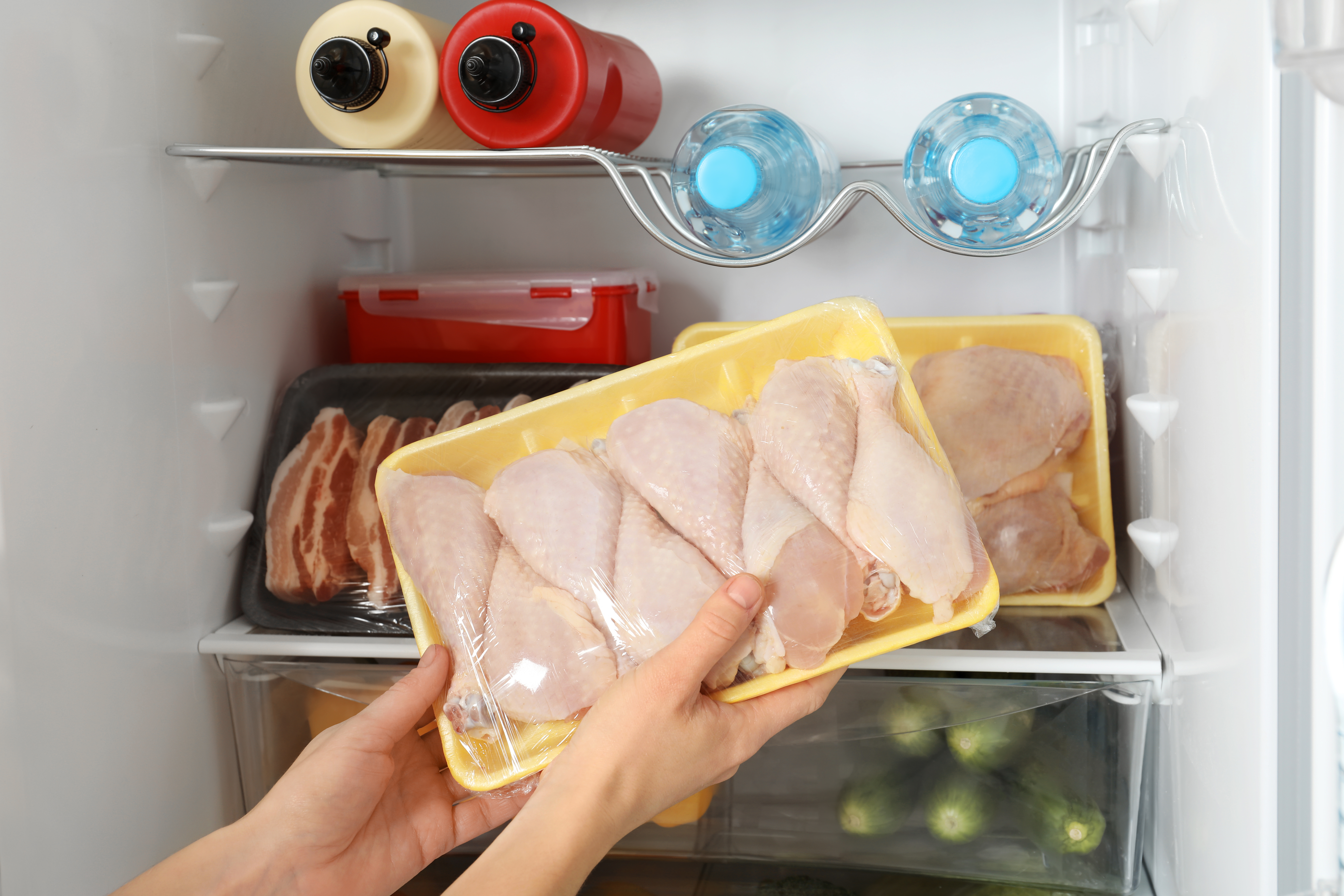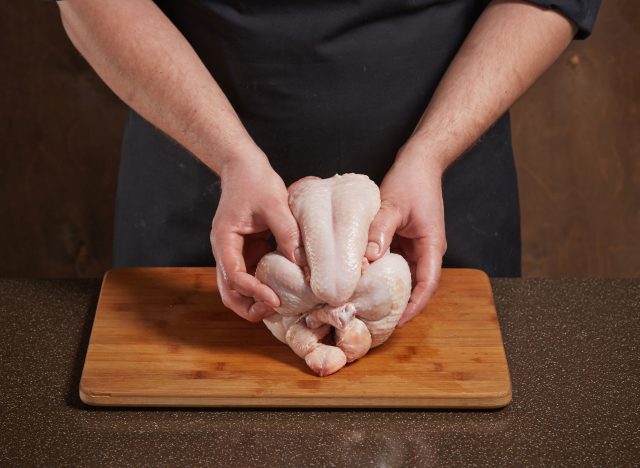How Long Raw Chicken Lasts in the Fridge—and Signs It’s Gone Bad

We’ve all been guilty of making ambitious plans to cook elaborate meals throughout the week, buying all the ingredients needed at the grocery store, popping everything into the fridge—and then swiftly forgetting about this investment the minute we are tempted with more convenient, less labor-intensive takeout options. But that’s the beauty of refrigeration technology, right? The cold temperatures of your fridge are designed to help preserve your food long enough until you’re ready to eat; a stark contrast to the days before the first mechanical refrigerators were invented, and people had to store their food in cold closets insulated with ice (hence the origin of the name “icebox.”) After procrastinating on your cooking plans, you may be wondering what of your now less-than-fresh groceries are still safe to eat—more specifically, how long is your raw chicken good in the fridge after all this time?
Chicken is, of course, one of the most beloved lean proteins on the planet. In fact, the National Chicken Council estimates that Americans consumed over 100 pounds of chicken per capita in 2022 alone, and this figure is projected to rise in 2023. And what’s not to love? As an affordable source of lean protein, chicken is highly versatile, able to complement salads as a protein-packed topping or anchor an entire multi-course meal as the star entrée.
Whether you want to prepare boneless breasts, chicken drumettes, or go big and roast a whole chicken, your cooking plans will hinge on the quality and freshness of your chicken while it’s still raw. If your raw chicken has been (literally and figuratively) chilling in the fridge, it’s likely still edible. At the same time, almost everything has a shelf life, and even the most high-tech fridges of today cannot preserve the freshness of perishable foods forever.
To help you avoid going through the trouble of making a chicken-centric meal, only to discover that the raw chicken you were working with was actually well past its prime upon taking a bite (and presumably gagging), check out this guidance on how long does chicken last in the fridge, plus how to tell if your raw chicken has gone bad.
How long does raw chicken last in the fridge?

According to the CDC, an estimated one million people in the U.S. fall ill each year after consuming contaminated poultry. Even at its freshest, raw chicken is frequently contaminated with lots of bacteria, including Campylobacter, Salmonella, and Clostridium perfringens bacteria.
So, think about how much time that bacteria has to incubate and multiply, the longer you let your raw chicken sit in the fridge. Is it worth it to roll the dice by still cooking your raw chicken after it’s been in your fridge for a week?
Based on the USDA’s guidance on how long fresh poultry is still good after being properly refrigerated, absolutely not—do not pass GO, do not collect 200 compliments on your pending chicken dinner. Once your raw poultry enters a standard refrigerator set to 40°F or below, you have up to two days to use it before it’s time to toss and lose it.
Although the USDA’s guidelines for cold food storage timelines are an excellent baseline barometer to measure the freshness of your food, this of course, is all relative and subject to change based on individual circumstances. That said, if you’re having doubts about whether or not your raw poultry is still safe to eat or well past its prime, there are a few tell-tale signs that will let you know if your bird has gone bad.
How to tell if your raw chicken is still good in the fridge.
If you’re wondering how to tell the difference between good vs. bad raw chicken breast, run through this list of four tips.
1. Check the date
If after purchasing your raw chicken, you immediately stored it in your refrigerator, then use its “sell-by” date as your gauge to start the clock on how much time you have before your meat goes bad. According to the USDA, “Fresh chicken, turkey, ground meat, and ground poultry should be cooked or frozen within 1 to 2 days of purchase.”
Pro tip: If your raw chicken has been in the fridge for so long that the sell-by date has rubbed off, then that’s probably a good sign it’s crossed over into rotten territory. Don’t chance it! Food poisoning is not worth the risk.
2. Look for discoloration
When it comes to investigating your raw poultry for freshness and quality, relying on visual cues signifying spoilage is perhaps the easiest approach. Minimally, it will be the least offensive imposition on your five senses, especially if you know you’re raw chicken’s time in the fridge is pushing the limit established by the USDA’s recommendations for refrigerated, raw poultry. Typically, when raw chicken is still fresh and safe to eat, it will look light pink, pale bluish-white, or even yellow, with bright white fat. If after investigating your raw chicken you notice blotchy yellow fat, or shades of green and gray—throw that bird away!
3. There will be stank
No, that is not a typo. Rancid, raw chicken doesn’t simply stink with an unpleasant odor. Even in the fridge, poultry on the decline has a putrid stank that can smell to the high heavens. To check if your raw chicken is still good, pull it out of the fridge and give it a little whiff. If you pick up any sour, fishy, or sulfuric notes of funk—get rid of it.
4. Check out the texture
Your raw chicken may pass your visual and sniff tests, but the texture is another big red flag to look out for before you start cooking. When raw chicken is still fresh, it will appear shiny, be moist to the touch, and even a little slippery. However, you’ll know if your raw chicken has taken a turn for the worse if it feels uber-slimy, sticky, and squishy. If that’s the case, throw your raw chicken out ASAP.








